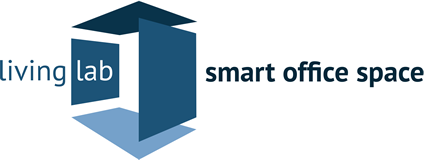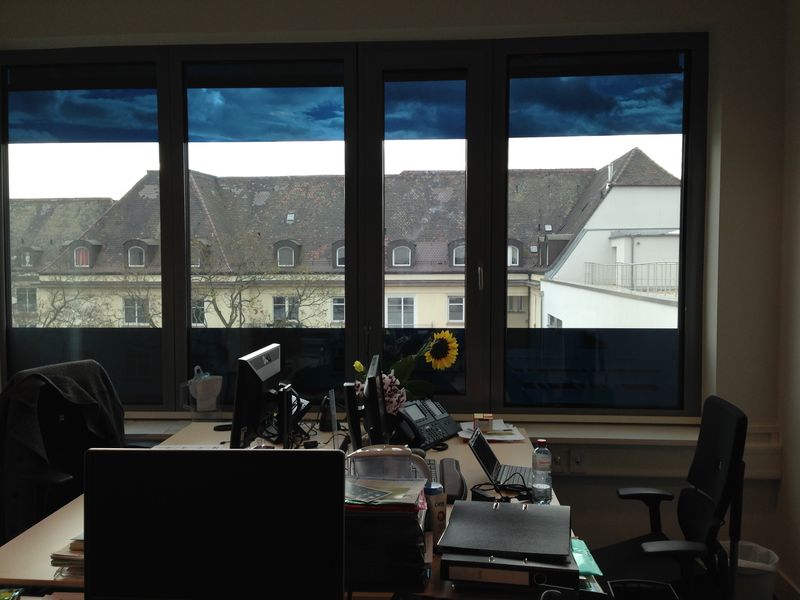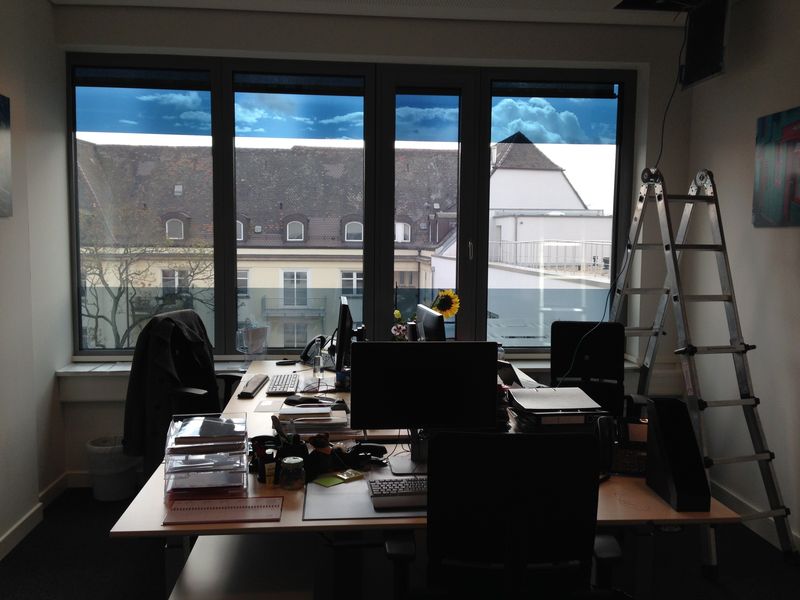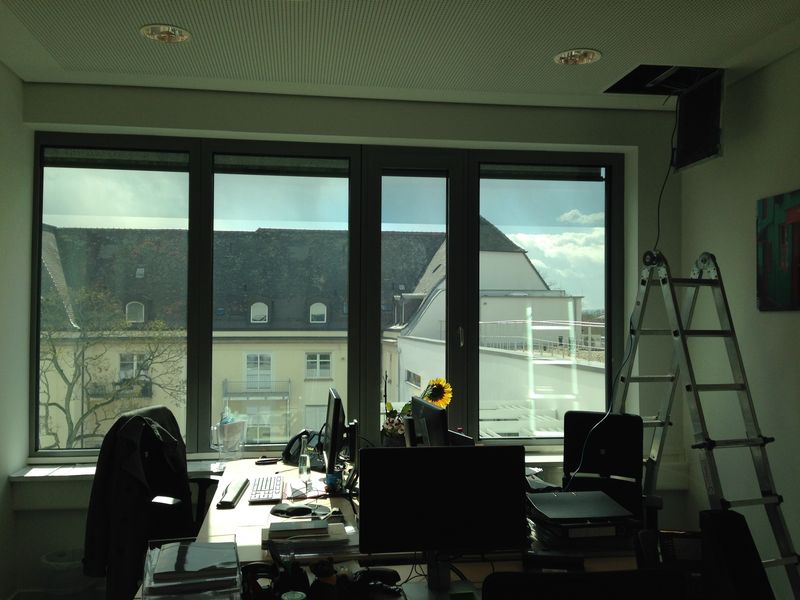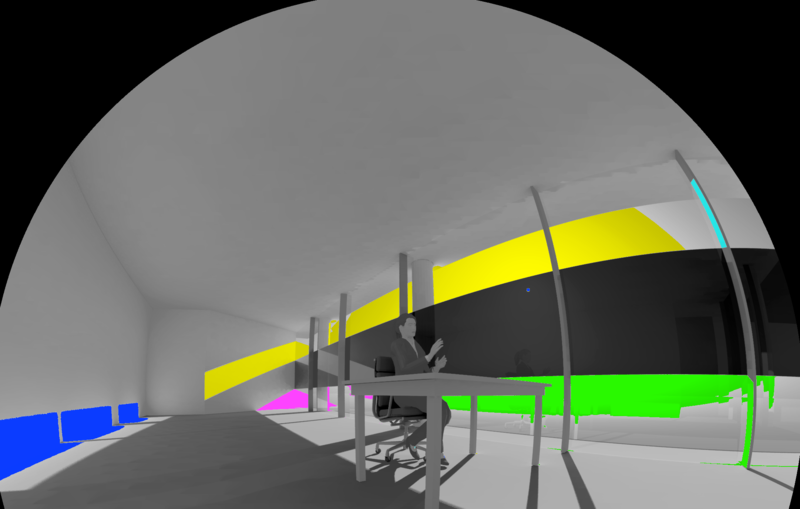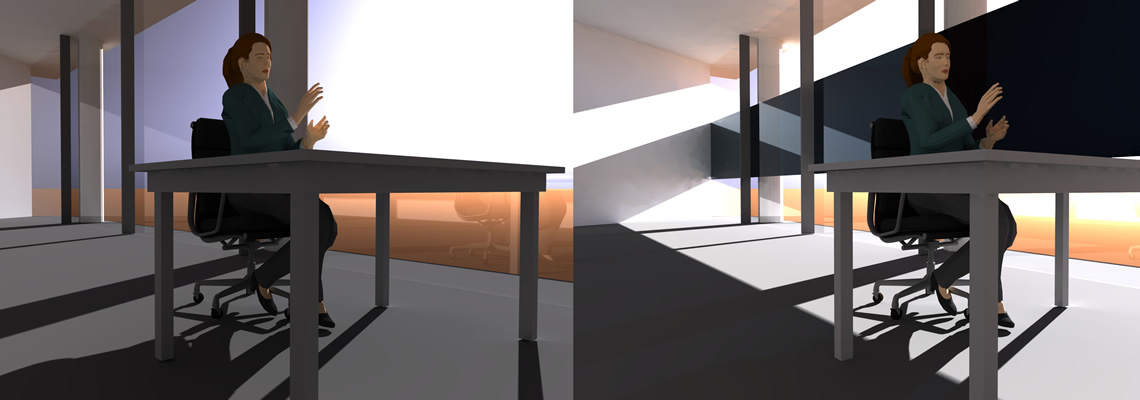
Complex control of electrochromic glazing
| Duration | 11/2015 - 10/2018 |
| Responsible | Prof. Dr.-Ing. Sabine Hoffmann |
| Team | Raghu Kalyanam, Sabine Hoffmann |
| Project type | Promotionsarbeit |
Complex control of electrochromic glazing
In modern office buildings, architects generally aim for a high daylight availability. Large window areas reduce energy for artificial lighting and allow for solar heat gains in winter. At the same time they represent a challenge in terms of thermal comfort and cooling load in summer. Furthermore, big transparent areas can impair working conditions at computer work stations by causing glare through direct sunlight or reflection on the screen. The use of electrochromic glazing allows for a dynamic adaptation of visible transmittance to ensure that requirements for work place illumination are met while glare conditions can be avoided.
The electrochromic glazing unit, which is installed at the Living Lab smart office space, is divided in three horizontal zones. Each zone can be controlled for four different states of transmission. If a glare condition occurs at a specific work place, the glazing zone which allows the direct radiation, will be tinted. The other zones are controlled to minimize the necessary adaptation of the eye by at the same time maintaining good color rendering. Even if visual comfort is good and there is no discomfort glare, it can be necessary to further tint zones due to thermal discomfort or energy demand, especially at times of high cooling loads in summer.
To develop a control strategy for the three zones is hence a complex task. In this PhD project, machine learning methods will be used to optimize the control algorithms based on inputs from High Dynamic Range Imaging and user feedback. The used reinforcement learning algorithm learns based on the available measurements and subjective votes for visual and thermal comfort. Over time, the control strategy adapts to user preferences.
Publications:
Kalyanam, Raghuram and Sabine Hoffmann. 2016. "Visual and thermal comfort with electrochromic glass using an adaptive control strategy." Paper presented at the 15th International Radiance Workshop (IRW), Padua, Italy, August 2016.
